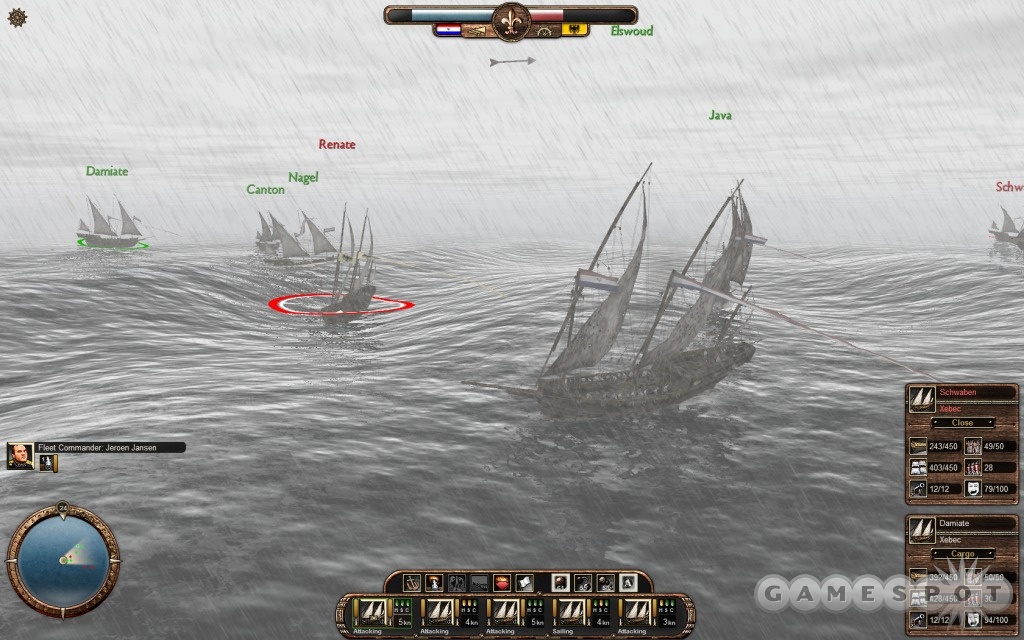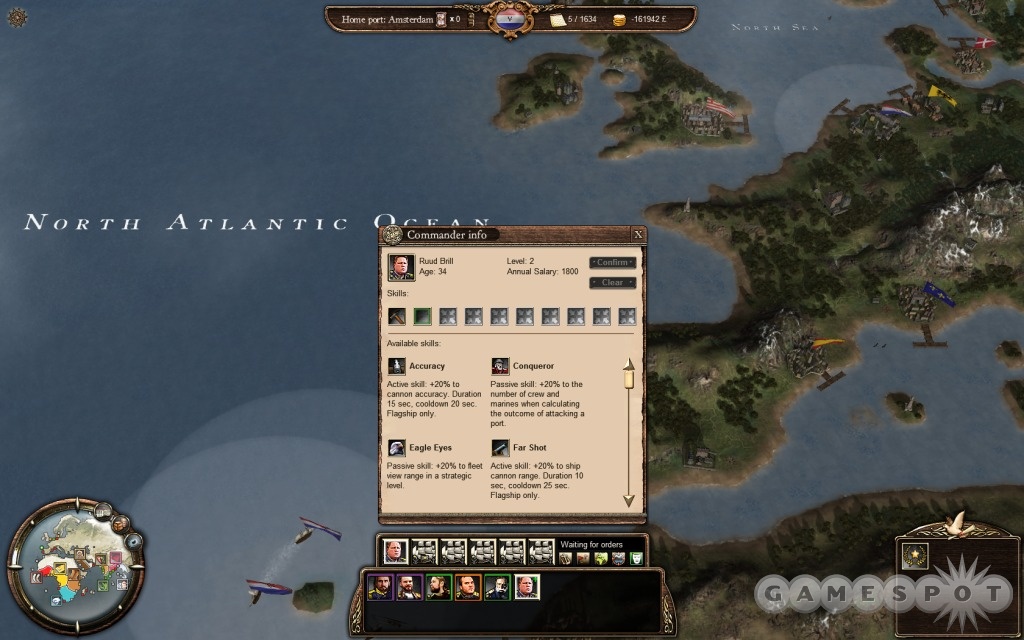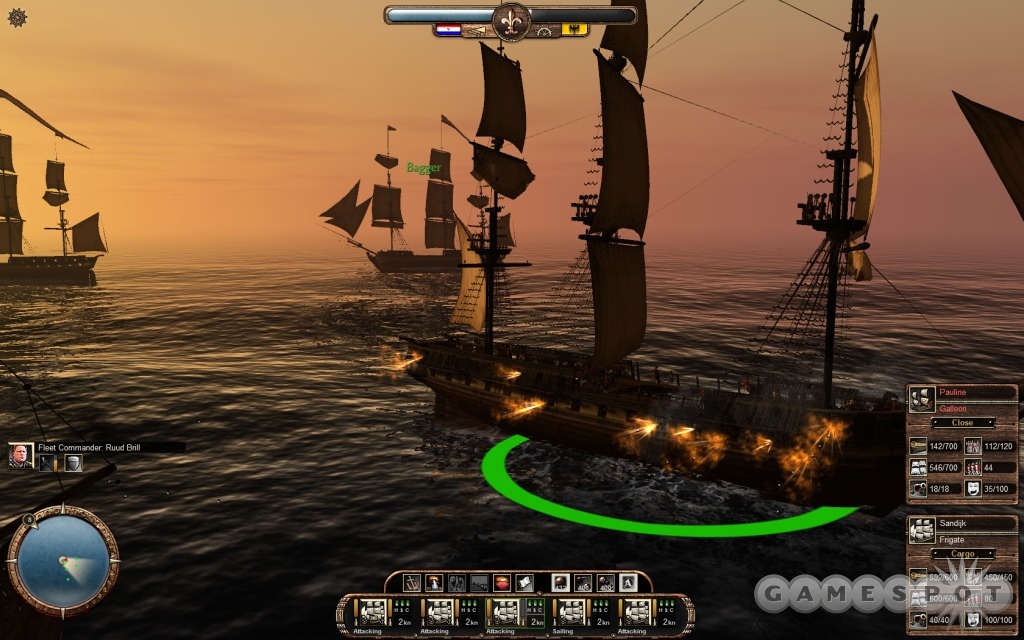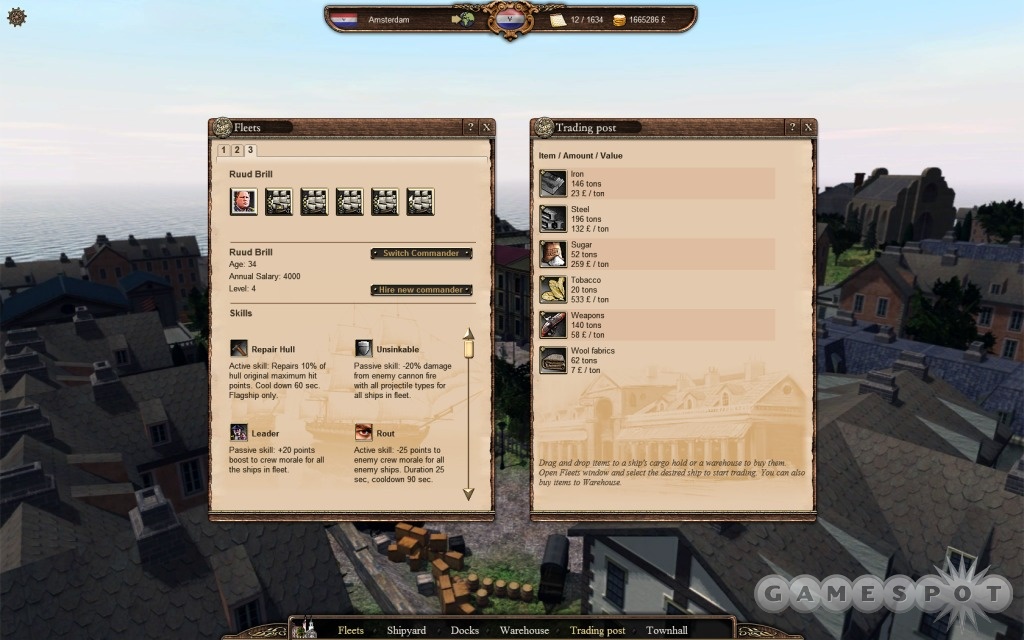East India Company is a mercantilist real-time strategy game set at the dawn of the global trade age. As governor of one of the great European East India companies, you must compete against others for dominance of the lucrative markets of Africa, the Middle East, and especially India. As the commander of a private navy that includes both merchant and military vessels, you'll stop at nothing to secure a profit, which includes seizing port cities from the natives, sinking the fleets of rival companies, and forming alliances to wage all-out war. Success in East India Company derives primarily from sound financial planning, measured growth, and innumerable boatloads of exotic luxuries. In addition, you'll find it necessary to personally direct every naval battle using the "tactical" mode for resolving ship-to-ship combat, which is sadly the weakest and most tedious element of EIC's gameplay. And unfortunately, multiplayer action is limited to these lackluster battles. While not without flaws, the trading gameplay is solid and should entertain many fans of the genre; however, those lacking in patience may find the laborious early tactical battles less fun than a watery grave.

East India Company comes with four single-player campaigns, which cover the years from 1600 to 1750. During every campaign, you'll play the East India Company of one of eight Western European nations, all of which historically chartered such companies. This excludes the Holy Roman Empire, which was presumably included to represent the short-lived Austrian Ostend company. However, there is no real difference among the factions aside from the geographical locations of their home ports. Those locations may give England and Portugal a slight advantage over the others because they are in good positions to box in their rivals. Every campaign uses the same strategic map that covers Europe, Africa, and Asia, through India. The exclusion of China is somewhat disappointing because it could have been fun to play through the Opium War time frame. However, controversial trade goods, such as opium and slaves, are left out of the game altogether.
The bulk of your single-player experience will be spent at the strategic and port views. Here, you'll build ships and organize them into fleets, buy and sell trade goods for profit, conquer ports with marines, and negotiate with foreign companies. Such missions as sinking a pirate fleet, delivering a special commodity order, or upgrading a port facility provide some variety, but nevertheless, buying and selling goods gets repetitive. Despite the availability of detailed reports about the price of tea throughout your empire, the trading game seems incomplete because you can sell your exotic goods in only one European city--your home port. When you get inevitably tired of manually managing trade, you can set up automatic trade routes, but unfortunately, these take away any satisfaction you might have derived from maximizing profits by buying, hording, and selling at the right times. As it turns out, the real key to a successful company is not micromanaging trade deals, but rather balancing how much you spend on ships, munitions, and upgrades while leaving enough free capital to buy massive quantities of spices, silk, and the like. Be careful: A few careless expenditures could wind up ruining your company. Another necessary consideration is diplomacy. If you offend enough of the other companies, your fortune will end up at the bottom of the ocean.

East India Company's interface functions capably on the strategic level, providing easy access to the location and cargo of your ships, the main trade goods supplied by various ports, detailed price histories for everything you have sold, and more. The strategic map is not very detailed--it mostly comprises empty expanses of land and ocean--but it is clear and easy to use. The port view interface, which you use to buy and sell goods, build and organize ships, and upgrade buildings works effectively as well, but only after you switch to 2D ports in the game options. 3D ports look great and function without a hitch, but the load times are absolutely intolerable. The music in port view is a nice touch because it rotates Indian, African, Arab, and European themes depending on the port's location.
The most beautiful part of the game is also the one you'll tire of the quickest: tactical mode. The gorgeous waves, sunsets, and thunderstorms are remarkably picturesque, while the ships--cannons, sails, and crews--are splendidly detailed. Sadly, you'll find yourself staring at those waves until you're seasick as you wait for the real-time tactical battles to progress. The ability to take direct control of individual ships with the WASD keys is promising, but it doesn't make up for the slow pace of combat. So, while there are some tactics involved, patience is probably more essential for victory, and whether you are using finesse to carefully guide your ships in direct control mode or just sloppily throwing every ship at the enemy, your biggest foe will be your own boredom. First, wait as you close in on the enemy vessel. Once you've engaged it, wait while your crew reloads the cannons and fires until your enemy is riddled with holes. All this would be perfectly tolerable if not for what happens next. Just as you think you're about to win, the enemy vessel begins to flee and catching up with it makes the minutes feel like hours, even with wind and speed in your favor.

If you get impatient and attack as soon as you're in range, you'll get even further behind, and the enemy vessel will ultimately escape after an excruciatingly dull chase. If you decide that tactical combat is not for you, auto-resolve is your only other option, but you'll quickly become reluctant to use it because it always results in heavy losses. However, on the bright side, tactical combat becomes much more fun once you start fielding superior ships with long range and lots of cannons. In the Grand Campaign, for instance, if you can make it past the first 30 years or so, you can rule the seas with fleets of frigates and ships-of-the-line that make battles fly by in comparison to the sloops you had at the start.
Tactical battles and uninterrupted trade runs reward your fleet commanders with experience that enables them to level up and buy numerous useful abilities. These range from faster movement speeds to extra cargo capacity on the strategic level. On the tactical level, you can accomplish tasks like hurting enemy morale and making emergency hull repairs. In addition to helping you improve and specialize your fleets, the commanders add a bit of character to EIC. Although their comments are relatively generic, their knowing sea-weary faces, ample girth, and flowing beards are surprisingly endearing.
East India Company is at its best when you can triumph over the other companies and build a powerful and flourishing trade empire. Thus, it is all the more disappointing that there is no multiplayer campaign, only tactical battles. The various online/local network modes primarily consist of variations on the same "sink all enemy ships in the time allotted" theme, and they suffer from the same issues as single-player. The Last Ship Floating mode puts you in command of a single ship and is well suited for direct control, but the matches often end in a draw after time runs out. The Dominion mode apparently involves capturing buoys to earn points, but we couldn't play through it thanks to a reoccurring crash-to-desktop issue. Although we had no other problems playing EIC over a local area network, we also never had any luck finding an online game.

East India Company doesn't live up to its potential. While the strategic aspect of the game may keep you engaged for a time, it's not ultimately strong enough to carry the tactical aspect. When you're ferrying goods back and forth across the map, you want something exciting to break up the routine, and the tactical battles should have filled that role. Their weakness, however, brings the entire experience down. If the combat at sea played as well as it looks, East India Company could have pleased a wider audience. Throw in the lack of a multiplayer campaign and other nagging issues, and you have a game recommendable only to trade enthusiasts and boat watchers.



